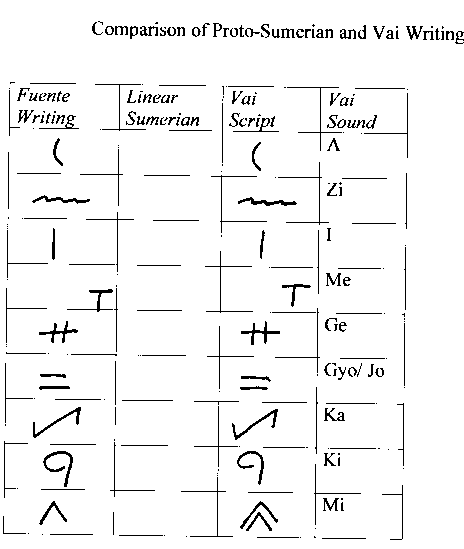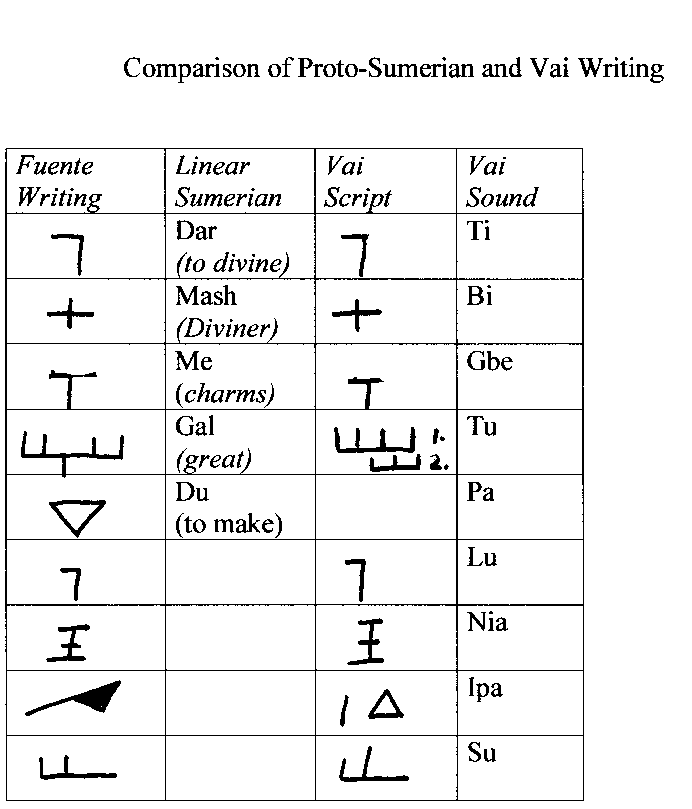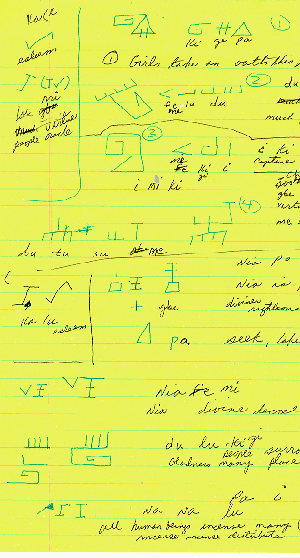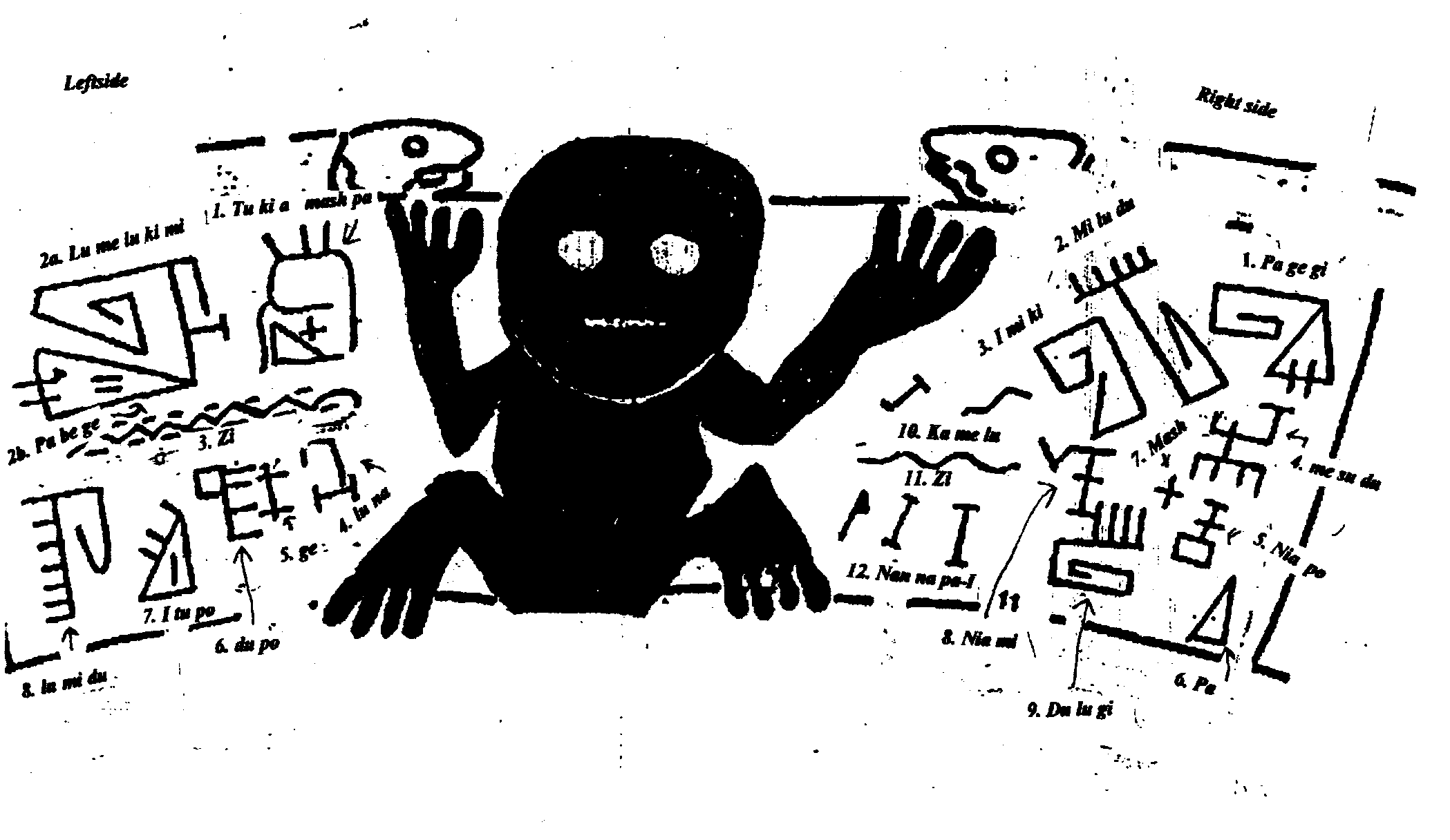
The Decipherment of the Fuente Magna Bowl
By
Clyde A. Winters, Ph.D.
In 1958/60 Don Max Portugal Zamora, a Bolivian archaeologist, learned of the Fuente Magna bowl's existence. Pastor Manjon, Mr. Portugal "baptized" the site with the name it bears today, "Fuente Magna".The Fuente Magna bowl was found in a rather casual fashion by a country peasant from the ex-hacienda CHUA, property of the Manjon family situated in the surrounding areas of Lake Titicaca about 75/80 km from the city of La Paz. The site where it was found has not been subject to investigation until recently. The piece in question is a little out of place. It is beautifully engraved in chestnut-brown both inside and out. It reveals zoological motifs and anthropomorphic characters within.
Controversy surrounds the writing on the Fuente Magna Bowl. Dr. Alberto Marini, translated the cuneiform writing on the bowl and discovered that these inscriptions were written in the Sumerian writing.
After a careful examination of the Fuente Magna, linear writing I determined that the writing was probably Proto-Sumerian. The Proto-Sumerian writing is found on many artifacts discovered in Mesopotamia. An identical script was used by the Elamites called Proto-Elamite.
Many researchers have been unable to read the writing because they refuse to compare Proto-Elamite and Proto-Sumerian writing with other writing systems used in 3000-2000 BC. I have compared the writing to the Libyco-Berber writing used in the Sahara 5000 years ago. This writing was used by the Proto-Dravidians (of the Indus Valley), Proto-Mande , Proto-Elamites and Proto-Sumerians.
All of these people formerly lived in Middle Africa, until the Sahara began to dry up after 3500 BC. Rawlinson, was sure that the Sumerians had formerly lived in Africa, and he used Semitic and African languages spoken in Ethiopia to decipher the cuneiform writing. Rawlinson called the early dwellers of Mesopotamia: Kushites, because he believed that the ancestors of these people were the Western Kushites of Classical literature.
The Libyco-Berber writing cannot be read using the Berber language, because the Berbers only entered Africa around the time the Vandals conquered much of North Africa. Although the Libyco-Berber writing can not be read using the Berber language it can be read using the Mande language. This results from the fact that the Proto-Mande formerly lived in Libya, until they migrated from this area into the Niger valley of West Africa.
The Vai writing have signs similar to the Libyco-Berber, Indus valley, Linear A of Crete, Proto-Elamite and Proto-Sumerian signs. The Vai people spoke a Mande language.

Figure 1: Comparison of Fuente, Proto-Sumerian and Vai Writing

Figure 2:: Comparison of Fuente, Proto-Sumerian and Vai Writing
Using the phonetic values of the Vai script, I have been able to decipher the Indus Valley and Linear A writing.
Given the fact that the Sumerian language is closely related to the Dravidian and Mande languages, and the similarity between the Proto-Sumerian script and the Libyco-Berber and Vai scripts, suggested that I might be able to decipher the Fuente Magna writing by using the phonetic values of the Vai script to transliterate the Fuente Magna writing. Once I transliterated the Fuente Magna signs, I translated the inscription using the Sumerian language.
To test this hypothesis I compared the Fuente Magna writing and symbols from the Vai writing. I found many matches. Next I consulted several works on the Sumerian language and writing system. A couple of these works were C.S. Ball, Chinese and Sumerian (London ,1913), and John A. Halloran, Sumerian Lexicon, http://www.sumerian.org/sumer/ex.htm . Once this was done I was able to decipher the Fuente Magna writing.
The Fuente Magna inscriptions are written in the Proto-Sumerian script. The Fuente Magna symbols have several Proto-Sumerian signs joined together to represent words and sentences. In figures 1 and 2, I separate the Fuente Magna signs into there constituent parts so they could be interpreted using the phonetic values of the Vai writing. In Figure 4 , I present a copy of the separation of the Fuente Magna signs into their separate parts.

Figure 4: Copy of worksheet used in decipherment of Fuente Magna Writing
Below is a transliteration of the inscriptions on the right side of the bowl. We are reading the inscriptions from top to bottom, right to left.
Transliteration
1. Pa ge gi
2. Mi lu du
3. I mi ki
4. me su du
5. Nia po
6. Pa
7. Mash
8. Nia mi
9. Du lu gi
10. Ka me lu
11. Zi
12. Nan na pa-I
Below I provide the translation in English
"(1) Girls take an oath to act justly (this) place. (2) (This is) a favorable oracle of the people. (3) Send forth a just divine decree. (4) The charm (this bowl) (is) full of Good. (5) The (Goddess) Nia is pure. (6) Take an oath (to her). (7) The Diviner. (8) The divine decree of Nia (is) , (9) to surround the people with Goodness/Gladness. (10) Value the people's oracle. (11) The soul (to), (12) appear as a witness to the [Good that comes from faith in the Goddess Nia before] all mankind."

Figure 3: The Fuente Magna Bowl
Below is a transliteration of the inscriptions on the left side of the Fuente Magna bowl. As in the earlier inscriptions we are reading the signs from top to bottom, right to left.
Transliteration Left Side Inscription
1. Tu ki a mash pa
2a. Lu me lu ki mi
2b. Pa be ge
3. Zi
4. lu na
5. ge
6. du po
7. I tu po
8. lu mi du
Translation
" (1) Make a libation (this) place for water (seminal fluid???) and seek virtue. (2a) (This is ) a great amulet/charm , (2b) (this) place of the people is a phenomenal area of the deity [Nia's] power. (3) The soul (or breath of life). (4) Much incense, (5) to justly, (6) make the pure libation. (7) Capture the pure libation (/or Appear (here) as a witness to the pure libation) . (8) Divine good in this phenomenal proximity of the deity's power."
This decipherment of the Fuente Magna bowl indicates that this bowl was used by the
People at Fuente Magna to make libations to the Goddess Nia to request fertility, and offer thanks to the bountiful fauna and flora in the area which made it possible for these Sumerian explorers to support themselves in Bolivia.
It is interesting that the people at Fuente Magna, referred to the Goddess as Nia. Nia, is the Linear A term for Neith. Neith, is the Greek name for the Egyptian Goddess Nt or Neit, Semitic Anat. This goddess was very popular among the ancient people of Libya and other parts of Middle Africa, before these people left the region to settle Mesopotamia, the Indus Valley and Minoan Crete.
This decipherment of the Fuente Bowl (Figure 3) supports the hypothesis of Awen Dawn that the bowl was used to celebrate the Goddess aspect of the ancient people of Bolivia. The fact that Awen accurately recognized that the figure on the bowl due its Goddess pose : open arms and legs spread, is further support for this decipherment.
Moreover, the identification of symbols on the bowl by Awen, that relate to European signs for the Mother Goddess probably relate to the early influence of Neith on the mainland of Greece and Crete.
The Fuente Magna bowl was probably created by Sumerian people who settle in Bolivia sometime after 2500 BC. The Sumerians had boats that sailed all the way to India-Pakistan. The Sumerians may have made their way around South Africa and entered one of the currents in the area which lead from Africa to South America. These Sumerians were then carried across the Atlantic Ocean by currents to South America (Bolivia).